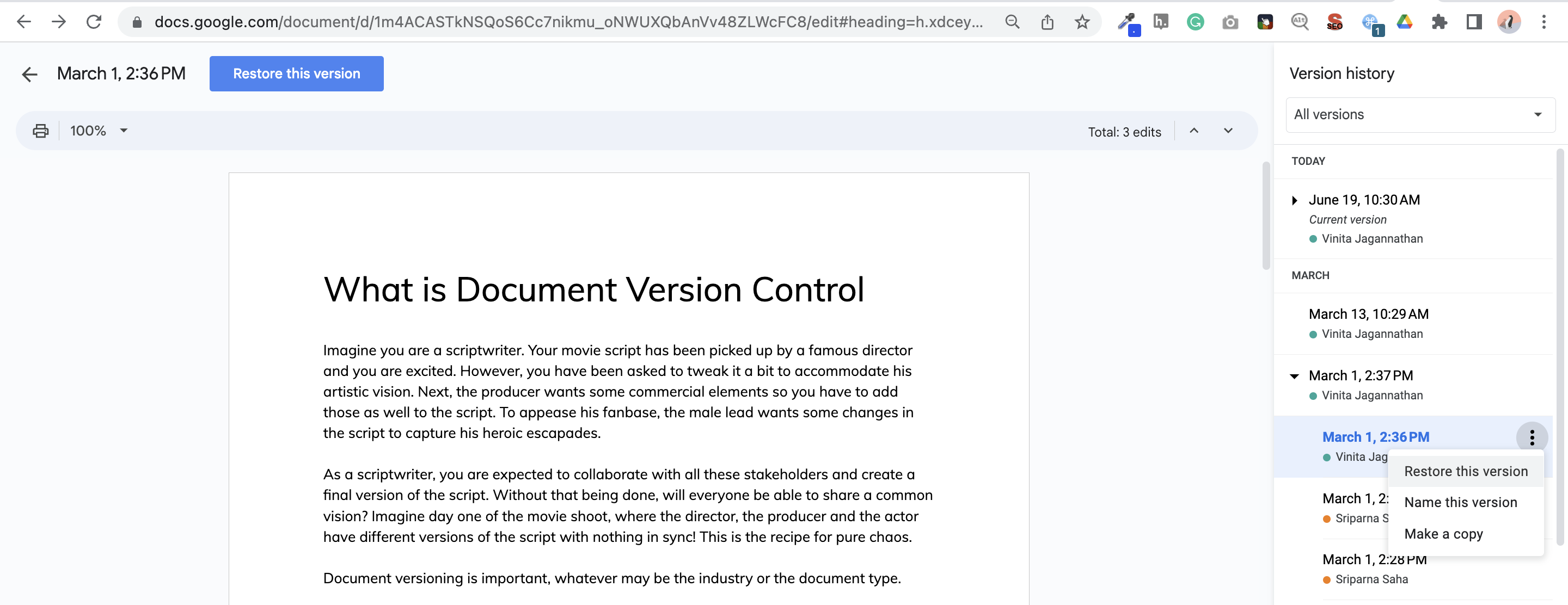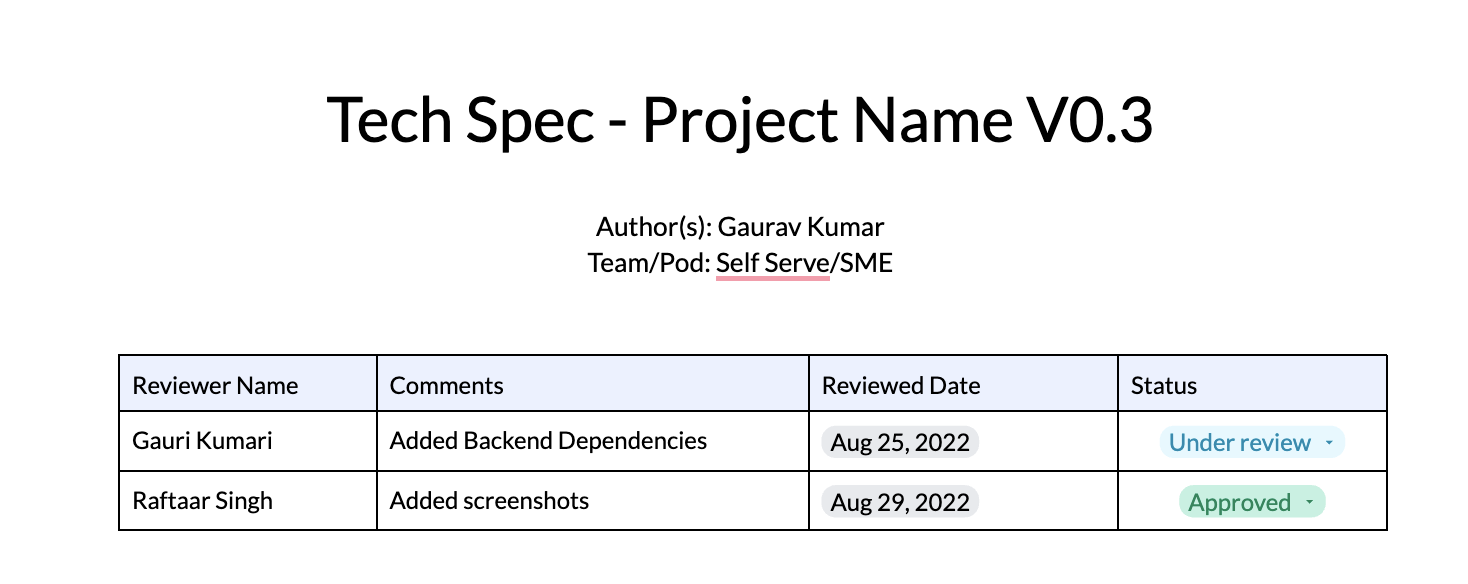Imagine you are a scriptwriter. Your movie script has been picked up by a famous director, and you are excited. However, you have been asked to tweak it a bit to accommodate his artistic vision. Next, the producer wants some commercial elements, so you must also add those to the script. To appease his fanbase, the male lead wants changes in the script to capture his heroic escapades.
As a scriptwriter, you are expected to collaborate with all these stakeholders and create a final version of the script. Without that being done, will everyone be able to share a common vision?
Imagine, day one of the movie shoot, the director, the producer and the actor have different versions of the script with nothing in sync! This is the recipe for pure chaos.
Document version control is important, whatever may be the industry or the document type.
What is document version control?
Document version control is the process through which a document’s journey from draft to final copy is tracked and managed. In today’s digital world, where most information is maintained online, and cross-functional collaboration is the norm, document versioning is extremely important to maintain a single source of information. Otherwise, we risk employees acting upon outdated, incorrect information.
Shruti and Raj are working on the same document, for example, “Creating a Payment Link on the Razorpay Dashboard”. While Shruti is updating the screenshots per the new UI, Raj is incorporating feedback from an external user. Both Shruti and Raj have their draft versions of an existing document. However, when publishing these content changes, they must ensure that both changes reflect on the final version. Without accurate, up-to-date documentation, the end user cannot accomplish their task.
Why is document version control needed?
Document version control is crucial due to the following factors:
- Quality Control
- Collaboration
- Security and Compliance
Quality Control
Having multiple versions of a document floating around affects its quality as the authenticity of the information becomes questionable. With a versioning mechanism in place, it becomes easier to track all the changes made to the document and ensure that all stakeholders make up-to-date and correct information available at all times.
Collaboration
Version control comes in handy when multiple people are updating a document. Consider Google Docs. It provides an easy mechanism for stakeholders to work together on a document. It also maintains all these versions created by these different stakeholders so that one can go back and check who made a particular change to a document at any point in time. One can also revert to a specific document version – which means there is no scope for data loss.

Security and Compliance
Ensuring that organisational policies and procedures are well-documented and regularly updated is vital. Having outdated information can cause compliance issues. By keeping track of different versions of a document, organisations can easily identify and access the version that was in effect at a specific point in time, which can be crucial for demonstrating compliance during audits or investigations.
How to Implement Version Control in Your Organisation

- Evaluate need: Determine if your organisation needs a version control system. Identify the areas where your organisation can benefit from this system.
- Set standards and versioning guidelines: Set a standard process in place. For example, all documents should contain the following information on the first page:
-
-
-
-
-
-
- Version number: Version numbers can begin from 0.1. Once the document is approved, the version can be 1.0. In case of subsequent edits, the numbering will be 1.1, 1.2, etc.
- Author details
- Summary of changes in that iteration of the document
- Date
-
-
-
-
-
-
- Select a tool: Choose the tool that would best meet your needs. Most organisations use tools such as Google Docs and Sharepoint for versioning. These tools also enable you to revert to a previous version. There are a host of tools out there for all types of needs.
- Train members: Once the system is in place, train your personnel on the process and the tool effectively.
- Deploy and monitor: Deploy the system and monitor how members are following the conventions.
 If you are managing a lot of content, such as User Guides, Admin Guides, Process Documents, API and SDK Documents, you will mostly have a Content Management System. In this scenario, a version control system is absolutely essential. Many organisations onboard a CMS tool with an in-built version control system, while others integrate their authoring systems with a version control tool. Based on your use case, choose the one that works best.
If you are managing a lot of content, such as User Guides, Admin Guides, Process Documents, API and SDK Documents, you will mostly have a Content Management System. In this scenario, a version control system is absolutely essential. Many organisations onboard a CMS tool with an in-built version control system, while others integrate their authoring systems with a version control tool. Based on your use case, choose the one that works best.
Conclusion
Document version control is a must for effective content management. It tracks changes, improves collaboration, maintains accuracy, and ensures the quality and accessibility of content. Adopting document version control can improve processes, increase productivity and reduce errors. Don’t miss out on these benefits; consider implementing document version control in your organisation now.





